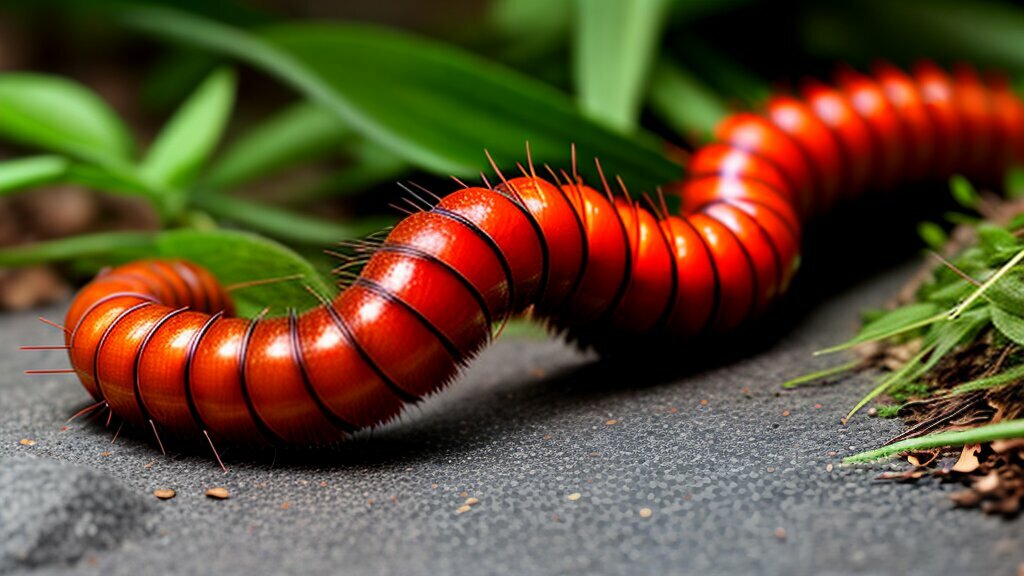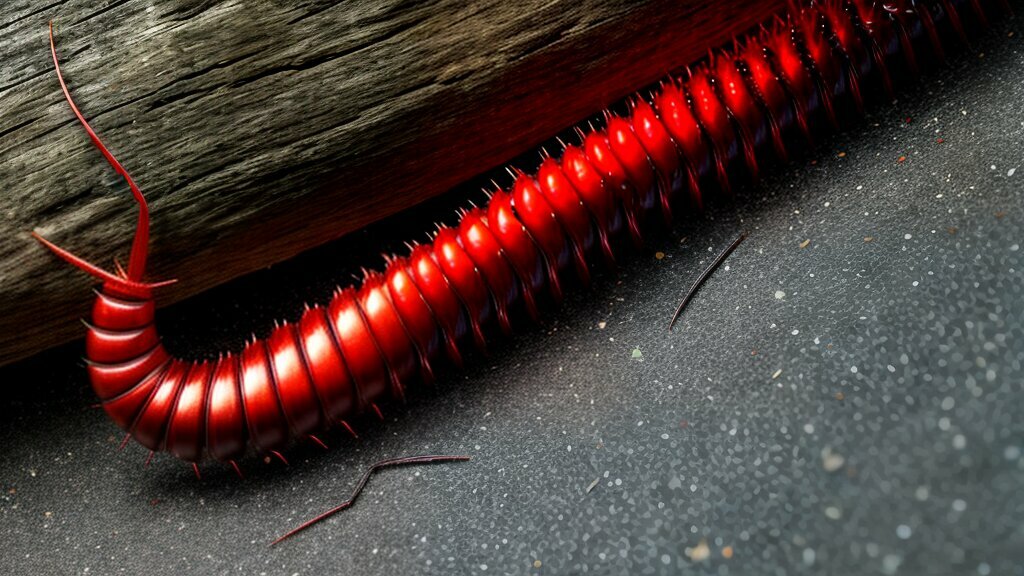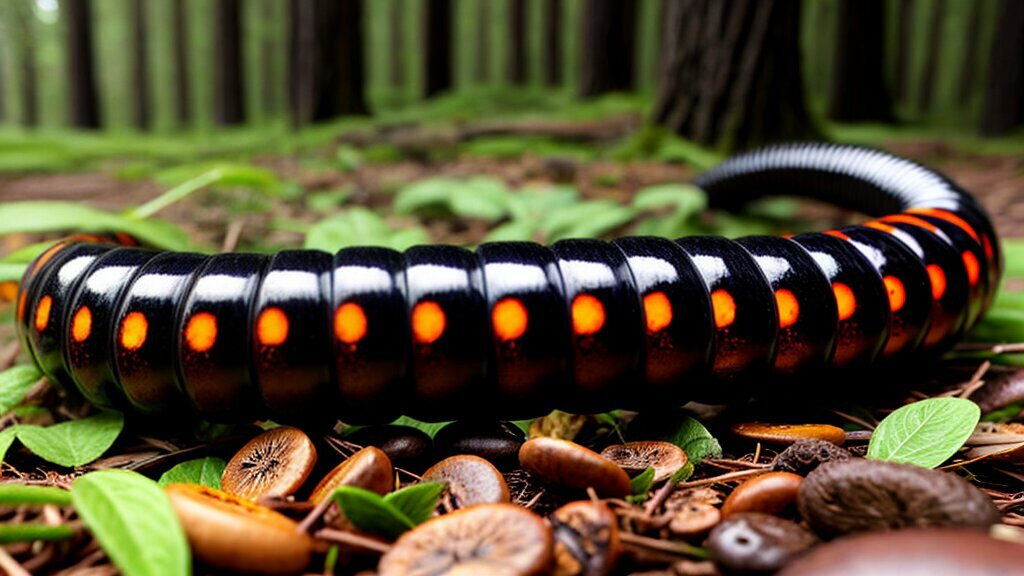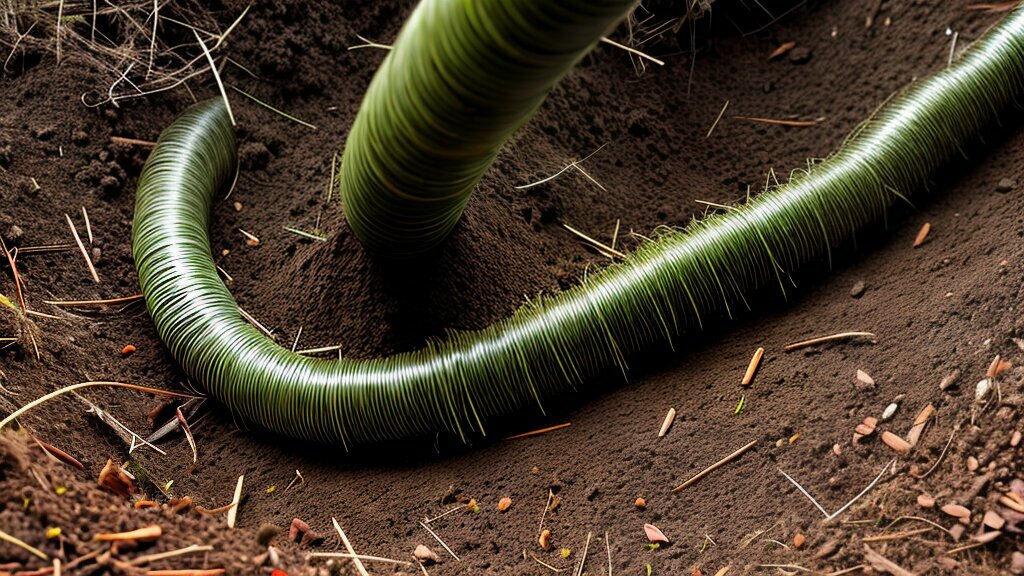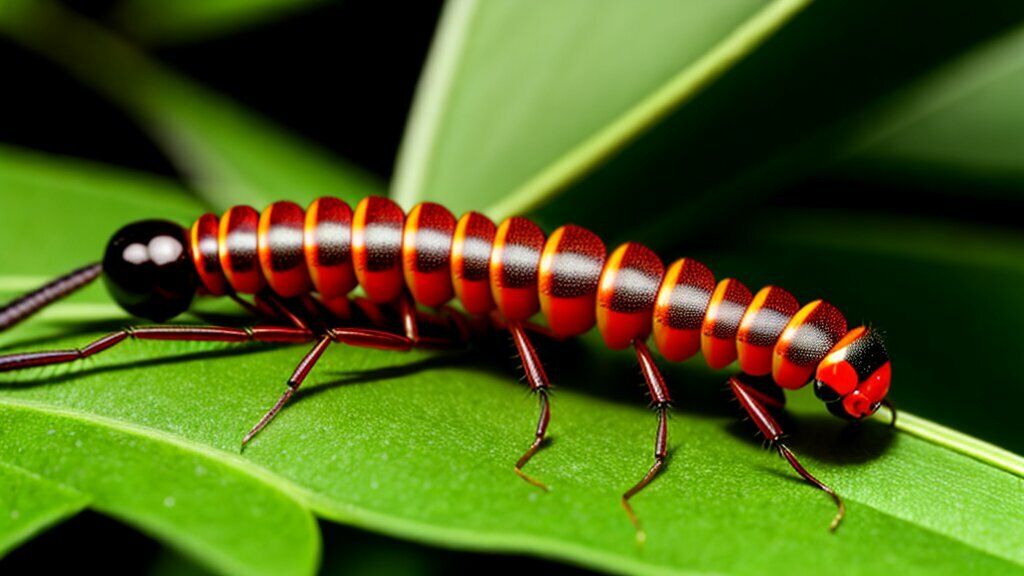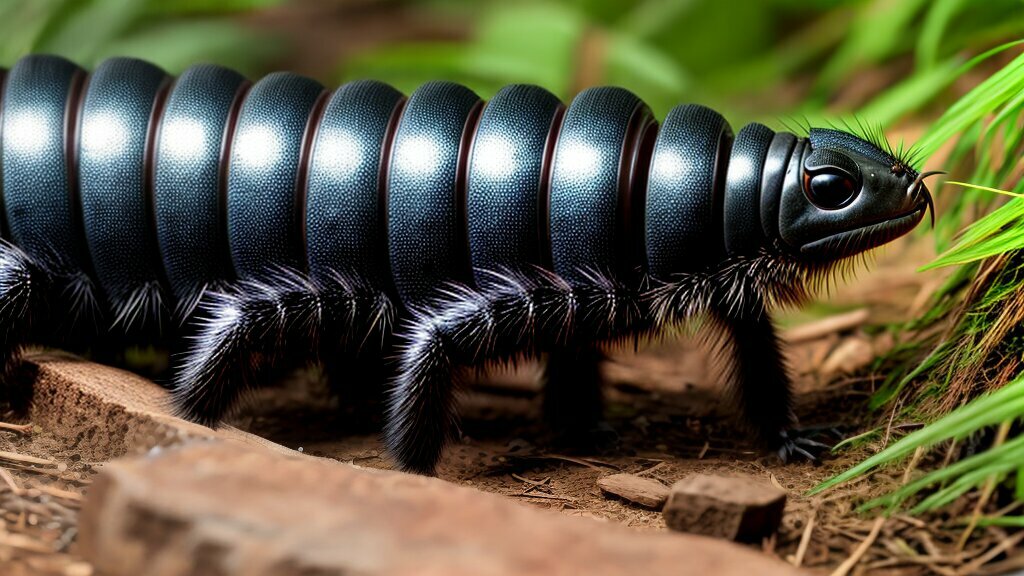Have you ever wondered what happens to a centipede after it dies? Although a rather morbid topic, understanding the death process and the ecological significance of centipede decomposition can provide valuable insights into the functioning of ecosystems.
To begin, it’s important to note that centipedes, like other organisms, will eventually meet their demise. Whether due to predation, disease, or natural causes, the death of a centipede sets in motion a series of processes that ultimately lead to their decomposition and integration back into the environment.
In this article, we will explore the various stages of centipede decomposition, the ecological impact of their death, and the fascinating world of these multi-legged creatures. Join us as we delve into the aftermath of a centipede’s death.
Key Takeaways:
- Understanding the death process of centipedes can provide insights into ecosystem functioning.
- The death of a centipede sets in motion a series of processes that ultimately lead to their decomposition and integration back into the environment.
- This article will explore the stages of centipede decomposition, the ecological impact of their death, and the fascinating world of these multi-legged creatures.
The Life Cycle of a Centipede
Centipedes are fascinating creatures that undergo a variety of developmental stages throughout their lives. While specific species may differ in their life cycle timelines, most centipedes share a similar developmental process.
Centipedes, like all arthropods, hatch from eggs. These eggs are typically laid in underground burrows or other protected areas, and the young hatchlings emerge after several weeks. Upon hatching, centipedes are small and fragile, and they must undergo several molts in order to grow and develop.
During this growth phase, centipedes may experience dramatic changes in their physical appearance. For example, some species change color as they mature, while others grow additional sets of legs or develop larger mandibles for hunting prey.
Once a centipede reaches maturity, it will engage in reproduction. The specifics of centipede reproduction differ between species, but most involve a male depositing sperm into a female’s reproductive tract. The female then lays a cluster of eggs, and the life cycle begins anew.
While centipedes may live for several years, they are not immortal. Eventually, all centipedes will die – whether due to predation, disease, or old age. However, their contributions to the ecosystem live on, as their remains become part of the natural decay process and provide nutrients to other organisms.
The Natural Decay of a Centipede
Once a centipede dies, the natural decay process begins. Bacteria and other decomposers play a crucial role in breaking down the body of the centipede and returning its nutrients to the environment.
As the centipede’s body begins to decompose, it releases a range of chemicals and gases, including methane and ammonia. These gases can attract scavengers and predators, such as beetles and ants, which feed on the remains of the centipede.
The decomposition process can take anywhere from a few weeks to several months, depending on factors such as temperature and moisture levels. During this time, the centipede’s body undergoes a series of stages, including the initial breakdown of tissues, the release of internal fluids, and the eventual disintegration of the exoskeleton.
The nutrients released during the decomposition process can be beneficial for other organisms, such as plants and fungi, which require these nutrients to grow and thrive. They also play a vital role in maintaining the balance of ecosystems, ensuring that nutrients are cycled through the environment and available for use by other living organisms.
Overall, the natural decay of a centipede is a complex and fascinating process that highlights the importance of decomposition in maintaining healthy ecosystems and promoting biodiversity.
Stages of Centipede Decomposition
When a centipede dies, a series of natural processes begin to break down the body and return it to the environment. The stages of centipede decomposition can be divided into four main phases:
- Fresh Stage: Shortly after death, the centipede’s body begins to cool and lose muscle tone. The skin becomes flaccid, and the body goes through a process called rigor mortis, where the muscles stiffen. During this stage, flies and other insects are attracted to the scent of the carcass and begin to lay eggs.
- Bloating Stage: As the eggs hatch, the centipede’s body begins to bloat as the larvae feed on the tissues inside. Gases produced by the larvae and bacteria cause the body to become distended, and the skin may split open. This stage can last for several days to a week.
- Active Decay Stage: In this stage, the soft tissues of the centipede’s body are rapidly broken down by bacteria and other microorganisms. The fluids that seep out of the carcass attract a range of scavengers and decomposers, including beetles, mites, and nematodes. This stage can last for several weeks.
- Advanced Decay Stage: During the final phase of decomposition, the centipede’s body is almost completely broken down, leaving only hair, bones, and other hard parts. The remaining organic material is processed by fungi and bacteria, which recycle the nutrients back into the soil. This stage can last for several months to years, depending on environmental conditions.
It is important to note that the length of each stage can vary depending on the temperature, humidity, and other environmental factors. However, the general pattern of decomposition remains the same.
Effects of Centipede Death on the Environment
While the death of any organism is a natural and inevitable part of life on Earth, it is often accompanied by a series of ecological consequences. In the case of centipedes, their demise can have significant effects on the surrounding environment, both in terms of nutrient cycling and species interactions.
When a centipede dies, its body begins to decompose, providing a source of nutrients for other organisms. Bacteria and other decomposers break down the tissues of the centipede, releasing nitrogen, phosphorus, and other essential elements into the soil. These nutrients can then be taken up by plants and used for growth, completing the cycle of life.
Furthermore, the decomposition of centipedes can have a positive impact on soil health. As the body breaks down, it creates small channels and pores within the soil, improving its porosity and aiding in water retention. This can benefit other soil-dwelling organisms, such as fungi and protozoa, as well as the plants that depend on healthy soil for their survival.
In addition to these more direct effects, the death of centipedes can also influence the broader community of organisms in the area. For example, if the population of centipedes declines due to increased mortality, this can create a vacuum that other predators may fill. Alternatively, if centipedes become more abundant, they may outcompete other species for resources, leading to shifts in ecological dynamics.
Overall, the death of centipedes may seem like a small and insignificant event, but it can have major ramifications for the surrounding environment. By understanding these effects and how they contribute to the functioning of ecosystems, we can gain a deeper appreciation for the complex and interconnected web of life that surrounds us.
Centipede Afterlife: Contributions to Ecosystems
Despite their small size, centipedes play an essential role in ecosystems through their afterlife. When a centipede dies, their body becomes a source of nutrients for other organisms, contributing to the overall health of the ecosystem.
The natural decay process, which involves the breakdown of tissues by bacteria and other decomposers, releases nutrients such as nitrogen and phosphorus back into the environment. These nutrients are then available for uptake by plants and other organisms, supporting their growth and survival.
Additionally, the decomposition of centipedes provides food for a variety of scavengers and decomposers, including other arthropods, bacteria, and fungi. This process contributes to the overall biodiversity of ecosystems by supporting a complex web of interactions among different organisms.
Furthermore, centipede decomposition helps to regulate the carbon cycle by releasing carbon dioxide back into the atmosphere. This process, known as mineralization, plays a critical role in maintaining the balance of carbon in ecosystems.
In conclusion, centipedes may seem inconsequential, but their afterlife is an essential component of healthy ecosystems. Through their decomposition, these small creatures contribute to nutrient cycling, biodiversity, and the regulation of the carbon cycle. Image source:
Centipede Mortality and Population Dynamics
Centipedes face several challenges throughout their lives, including predation, habitat loss, and disease. Mortality rates can vary widely depending on the species and their environment, and there is still much to learn about how these factors influence population dynamics.
While adult centipedes are generally fierce predators, their vulnerable young are often preyed upon by a variety of animals, including birds, rodents, and other invertebrates. In addition, habitat loss and fragmentation can also impact centipede populations by reducing suitable breeding areas and limiting access to food and shelter.
One factor that may play a role in centipede mortality is their susceptibility to disease. Although research in this area is limited, studies have suggested that certain diseases can significantly reduce the survival of both juvenile and adult centipedes.
Another important consideration is the impact of human activities, such as pesticide use and pollution, on centipede populations. These factors can disrupt the delicate balance of ecosystems and have far-reaching consequences for biodiversity and conservation efforts.
Despite the many challenges facing centipedes, their populations continue to thrive in a variety of environments around the world. By studying the factors that influence their mortality and population dynamics, researchers can gain a better understanding of these fascinating creatures and the ecosystems they inhabit.
Unanswered Questions and Further Research
Despite existing knowledge about centipede death and decomposition, there are still numerous questions that require further research.
For instance, little is currently known about the specific types of bacteria and fungi that aid in centipede decay and their precise roles in the process. Further study of these microorganisms could shed light on the mechanisms behind decomposition and help scientists better understand the broader ecology of the region.
Additionally, more research is needed to understand the impacts of human activity on centipede populations and their habitats. Centipedes are often found in areas that are vulnerable to development and resource extraction, and it is possible that these activities could have negative consequences for their survival and the health of surrounding ecosystems.
Finally, there is still much to learn about the broader role that centipedes play in regional and global ecology. Although these creatures are often viewed as minor components of forest and soil ecosystems, they may play critical roles in processes such as nutrient cycling and soil aeration. Further study is necessary to fully understand the ecological significance of centipedes and to develop effective conservation strategies that protect these important species and their habitats.
*Image related to unanswered questions and further research on centipede death
The Fascinating World of Centipedes
Centipedes are among the most intriguing creatures in the animal kingdom, with over 8,000 known species spanning the globe. They belong to the phylum Arthropoda, which includes insects, spiders, and crustaceans, and are distinguished by their long, segmented bodies and numerous legs.
One of the most remarkable aspects of centipedes is their predatory nature. Most species are carnivorous, using their powerful jaws and venomous fangs to capture and subdue their prey. They hunt a variety of insects, spiders, and other small creatures, and some can even take down larger animals like frogs and rodents.
Centipedes also have a unique means of locomotion. Unlike most animals, which move their legs in pairs, centipedes move each pair of legs independently, creating a distinctive undulating motion. This allows them to navigate uneven terrain and burrow into soil and other substrates.
Despite their fearsome reputation, centipedes play an important role in ecosystems around the world. They are important predators, controlling populations of other invertebrates and contributing to the balance of many ecosystems. They also serve as a food source for a variety of other animals, including birds, reptiles, and small mammals.
In recent years, researchers have begun to unravel the genetic and physiological mechanisms that govern the biology of centipedes. These studies have shed light on everything from their venom production to their sensory systems, providing a deeper understanding of these fascinating creatures.
Overall, centipedes represent a rich and diverse group of animals that continue to fascinate scientists and nature enthusiasts alike. From their unique predatory tactics to their important ecological roles, they are truly one of the most remarkable creatures on the planet.
Conservation Considerations for Centipedes
With over 3,000 species of centipedes worldwide, these fascinating creatures play an important role in maintaining healthy ecosystems. Unfortunately, centipede populations are under threat due to habitat destruction, climate change, and other factors.
Conservation efforts are crucial to protecting these important species and preserving the biodiversity of our planet. This includes initiatives to protect their habitats, promote sustainable land use practices, and educate the public about the importance of centipedes and other arthropods in our ecosystems.
One important step in centipede conservation is to reduce the use of harmful pesticides and chemicals that can have negative impacts on these and other beneficial organisms. Instead, integrated pest management practices that prioritize the use of natural predators and other non-toxic methods can help maintain healthy centipede populations and promote ecological health more broadly.
In conclusion, centipedes are an essential part of our natural world, and it is up to us to ensure their continued survival and success. By supporting conservation efforts and embracing sustainable practices, we can help protect these fascinating creatures and the ecosystems they call home.
Conclusion
Centipedes are fascinating creatures that play important roles in ecosystems. Understanding what happens when a centipede dies can provide valuable insights into the processes of decomposition and nutrient cycling. From the natural decay of their bodies to the eventual contribution to the environment, centipedes continue to play a vital role even after death.
As we continue to learn more about centipedes and their significance, it is important to consider conservation efforts to protect their habitats and promote biodiversity. By doing so, we can ensure that these amazing creatures continue to thrive for generations to come.
FAQ
Q: What happens when a centipede dies?
A: When a centipede dies, it goes through a natural decay process. The decomposers such as bacteria play a crucial role in breaking down the tissues, returning the nutrients to the environment.
Q: What is the life cycle of a centipede?
A: The life cycle of a centipede includes stages of growth, reproduction, and eventual death. They undergo molting to grow and can reproduce by laying eggs.
Q: What is the natural decay process of a centipede?
A: The natural decay process of a centipede involves the breakdown of its tissues by bacteria and other decomposers. This process releases nutrients back into the environment.
Q: What are the stages of centipede decomposition?
A: Centipede decomposition occurs in various stages, starting from the breakdown of tissues to the final return of nutrients to the environment. These stages contribute to the cycle of life.
Q: What are the effects of centipede death on the environment?
A: Centipede death has several effects on the environment. It releases nutrients during the decomposition process, which can benefit other organisms and contribute to ecosystem functioning.
Q: How does a centipede’s afterlife contribute to ecosystems?
A: The decomposition of a centipede after death plays a vital role in ecosystem functioning. It contributes to nutrient cycling and provides resources for other organisms in the ecosystem.
Q: What is the role of centipede mortality in population dynamics?
A: Centipede mortality affects population dynamics. Factors such as predation, competition, and environmental conditions influence their survival and can have implications for their overall numbers.
Q: Are there any unanswered questions or areas of further research related to centipede death?
A: There are still unanswered questions and areas of further research regarding centipede death. Scientists continue to explore the intricacies of the decomposition process and its ecological implications.
Q: What are some fascinating facts about the world of centipedes?
A: Centipedes have fascinating biology, behavior, and ecological significance. They possess venomous fangs, exhibit various hunting strategies, and contribute to the overall biodiversity of ecosystems.
Q: Why are conservation considerations important for centipedes?
A: Conservation efforts for centipedes are essential because they play a role in maintaining biodiversity. Protecting their habitats and promoting conservation practices helps preserve their populations and overall ecosystem health.

